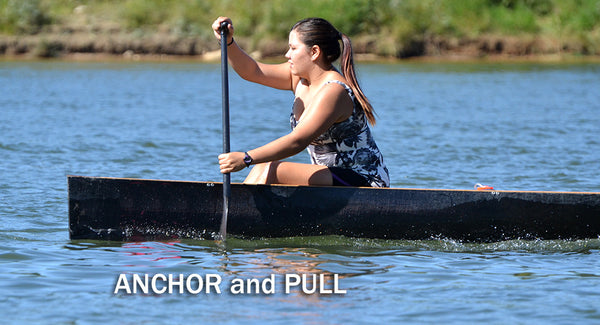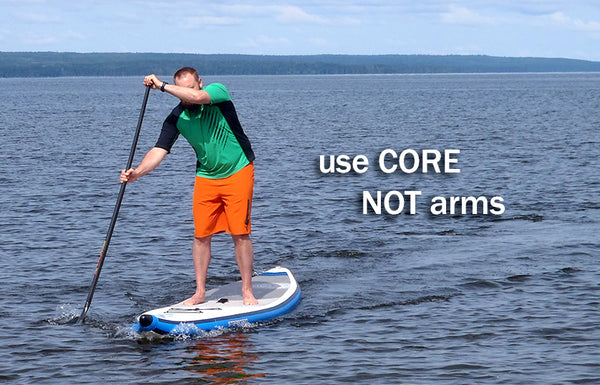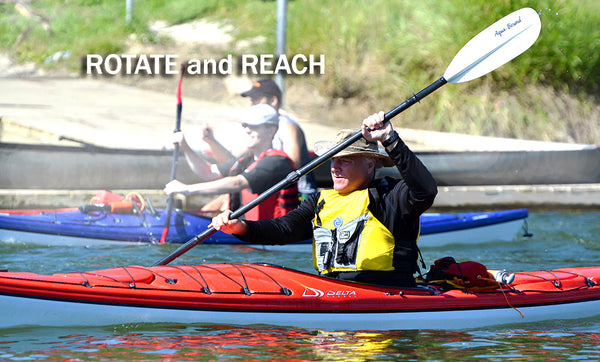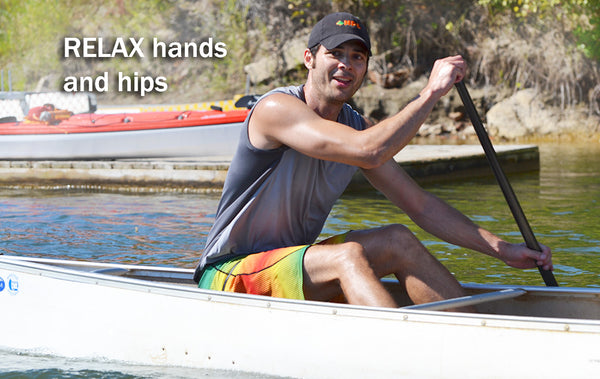Paddle better: change the way you THINK
You think you’re doing everything right with your paddle. And then someone flies by you, looking like they’re hardly working at all. It may be that changing the way you visualize paddling can make the difference between being a mediocre paddler and a good one.
Here are some ways to think about paddling that might improve your stroke efficiency:
Anchor and pull. As the paddle enters the water and you put force on the blade, don’t think about pushing it through the water. Instead, imagine you have just set an anchor point in the water and you are pulling your boat towards that point. It may help to visualize using an ice axe to pull yourself up an ice wall: anchor the axe and pull your body towards it. When you imagine it this way, your body will use stronger muscles because it seems like a bigger task. If you are imagining pushing a light little paddle through the water, you tend to use smaller muscles like the arms, which fatigue quickly.

Focus on your core for strength, not your arms. This is related to the last one. Many people think you need arms like Hulk to paddle strong. Not true. Think of your arms as mere attachment sticks, connecting your body to the paddle. The real power comes from your torso/core as you pull yourself (and therefore the boat) towards the blade. All the arms really do is position the paddle properly.

Rotate for power. You want all your power to propel the boat forward without wishy-washing from side to side. To get the most power out of your body – your core – you need to rotate, or twist, your torso. As you reach forward with your paddle your forward shoulder should drop slightly as you twist, allowing you to reach the blade farther.
Reach forward, not back. A long stroke doesn’t mean better power. At the back end of your stroke the blade is not vertical in the water – so your paddle ends up pushing up on the water. If you paddle hard this causes the boat to bob, which shows that energy is being lost from forward momentum. Plant your blade well ahead of you – reach! - and pull in a horizontal plane towards your hip, where your paddle should exit the water. Bent shaft paddles are most effective for keeping the blade vertical in the water.

Speed up your recovery, not your stroke. When most people try to pick up speed, they try to pull their paddle through the water faster. They may pick up speed but after a few minutes they’re ready to explode from the effort. Instead of focusing on the stroke, try to speed up your recovery. Pull a nice hard stroke through the water, exit your paddle and whip it forward through the air to the start of your next stroke. You’ve just upped your stroke rate without compromising any power.

Let go a little. When concentrating on paddling, it’s easy to tense up. Ease your grip on the paddle – this prevents a lot of problems (muscle fatigue, for one). Make a conscious effort to loosen your hips so you can feel how the boat is moving better. If you are in a tandem canoe or kayak you can feel your partner’s stroke and better match up with it. Relaxing makes you go faster.



Leave a comment